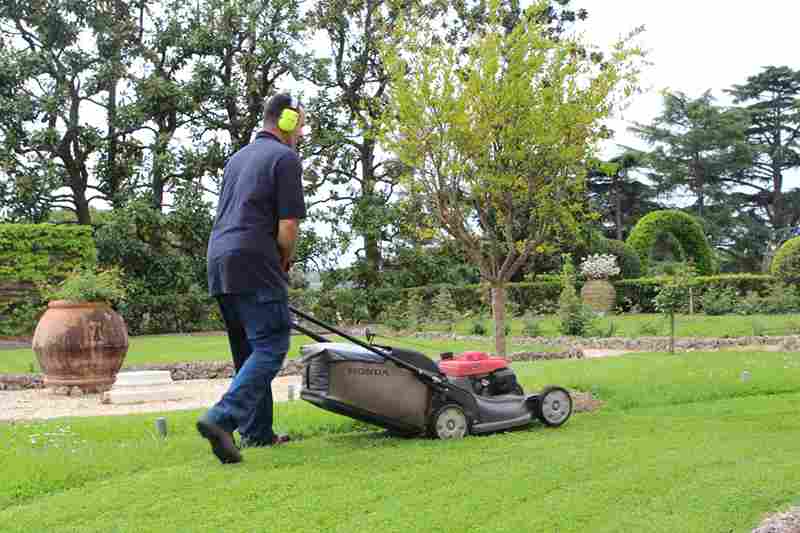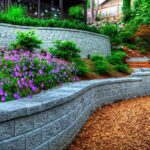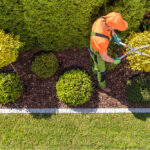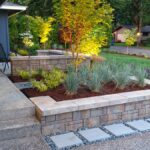Landscape Maintenance Practices
There isn’t a homeowner on the planet who wants landscaping that requires excessive care, but a few will accept it if it is necessary to get what they want.
It turns out that even the most extravagant landscapes can be tamed. If you give them the minimal necessary care on a regular basis, they will reward you with progressively lower maintenance over time.
To accomplish this goal, you must build your landscape maintenance program from a solid foundation. This includes a smart design, attention to standard horticultural practices, and whenever possible, proactive planning for expected conditions.
7 Landscape Maintenance Practices
Landscape architects and horticulturists can tell at a glance whether landscaping plantings and beds are maintained by professionals who know the timeless practices that never go out of style. Once you get to know them, you’ll have that same eye that master gardeners and professionals share.
#1. Prepare Ornamental Bed Soils
Planting beds with rich, loamy soils naturally support plantings and the ecosystem of microbes, fungi, and the like that are part of it. For this reason, it’s wise to replace the top 6-8″ of soil in planting beds with fresh topsoil to establish that essential foundation.
This is also an invaluable renewal practice to renew planting beds. It can be a little tricky with existing plantings, especially trees.
However, pruning away tender feeder roots at the surface to replace the soil can be a beneficial practice. If the soil is tired, its likely roots are too.
Carefully trim them back and add fresh topsoil to jumpstart their growth.

Minnesota Lawncare & Landscaping Services | Green Grounds Landscaping
#2. Get Plant Depths Just Right
When planting trees, shrubs, and even perennials, you will have greater success by ensuring they are at the correct elevation, not too high or low. Getting this right comes from experience, knowing how much the plant will settle into the disturbed soil.
This should be monitored during the first month or so of planting.
Plants may settle and shift due to the effects of high winds before they have rooted themselves. It’s a simple matter to raise the level of plants with shovels and additional soil. If plants are too shallow, it’s best to remove them and dig the holes deeper.
If this is not possible, in the case of larger trees or shrubs, for example, it’s best to carve away the bottom portion of the root ball. This may seem to be an aggressive technique, but it isn’t, because the surface roots are the most important for getting the plant reestablished.
#3. Protect Roots With Organic Mulch
The gold standard for mulch has always been shredded hardwood bark. This product decomposes and breaks down slowly, has an attractive appearance, and functionally works to minimize moisture and temperature fluctuations at the surface.
Apply 2-4″ of mulch to the surface around each plant, being careful not to pile it high against the trunk, as this will encourage rotting of the bark and detrimental bacterial growth. Nowadays, there are many types of wood mulch products.
If you are using one that is not predominantly bark, be sure that it has been sufficiently cured or seasoned to allow for harmful chemicals to leach out of it.
Related Article: Rock Vs Mulch In Planting Beds: Which Is Better?
#4. Cultivate Soils To Increase Airflow
Professional landscape maintenance services in Minnesota should lightly cultivate the mulch and surface soil with rakes to loosen it. This allows for oxygen to freely pass to the root systems. Heavier clay soils will benefit the most from this practice.
Here in Minnesota, bed cultivation is typically not needed in the springtime because, after a winter of free-thaw cycles, the soils have self-cultivated. Early fall when temperatures have dropped is probably the best time for this practice because temperatures have decreased and moisture is more plentiful.
#5. Provide Life-Saving Supplemental Drainage
Soils that do not properly drain are starved for oxygen. Water literally squeezes oxygen out of even the smallest air pockets. If remedial measures are not taken within a few days or weeks at the most, the plants will begin their inevitable decline.
Natural drainage is accomplished by the pitch of the land. Over years and years of erosion, natural areas such as forests have carved out these escape routes for excessive moisture.
In residential environments, it may be necessary to install sub-service drainage measures that will carry off the water more rapidly.
Consider these systems investments in the longevity of your landscape plants, as they may only be needed a few times each year, but that’s enough to merit their use.
#6. Safely Stop Weeds With Proactive Care
There are three basic methods professionals use to minimize weeds. The most common practice, mechanical cultivation, is also the safest for people and pets.
Most contractors will also use a pre-emergent herbicide to prevent weeds from germinating in the springtime. If the practice is successful, then minor cultivation is all that’s needed. A more aggressive technique is a broad-spectrum herbicide.
These products, while available to homeowners in diluted concentrations, are best left to the experts who are licensed in their use. They will know how to use them safely to minimize the risks to people, plants, and pets.
Related Article: Pre-Emergent Weed Control: 5 Things You Need to Know About It
#7. Prevent Diseases With Timely Care
As it is with weed control, the best and safest disease control practices are mechanical. For example, crabapple trees are susceptible to a variety of fungal diseases that are spread when contaminated leaves fall to the ground and are blown into nearby properties.
Attention to raking up these leaves and removing them from the site can control or ultimately eradicate the disease from the property.
You can use similar procedures to manage unsightly oak galls. Galls are growths on the leaves of oak trees that lead to the curling and disfiguring of leaves.
In addition to pruning off stems with oak galls, expeditiously cleaning up fallen leaves often proves highly successful in eliminating the problem from the landscape.
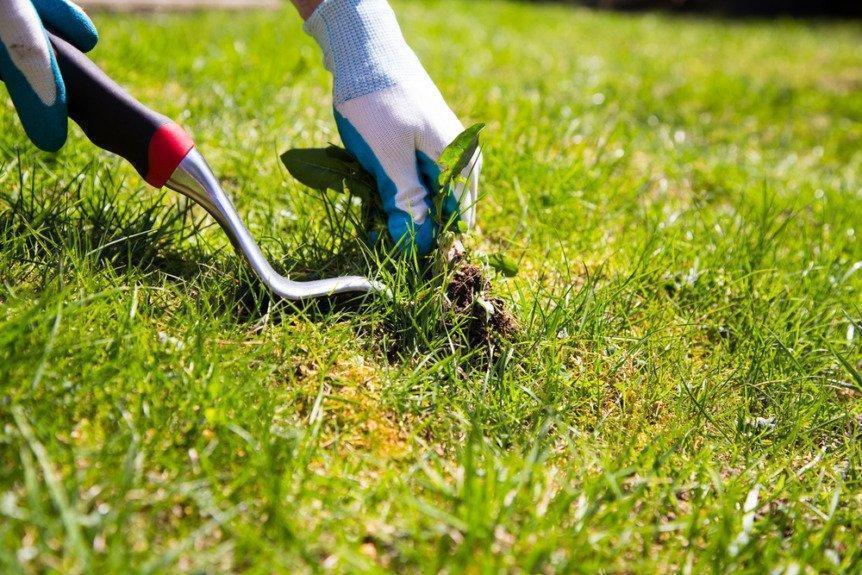
Minnesota Lawncare & Landscaping Services | Green Grounds Landscaping
Green Grounds Landscaping: Helping Minnesota Homeowners Enjoy Outdoor Living
Our top priority is creating living spaces that are right for you. We pride ourselves on working with you from concept to construction to create the right landscape for your needs.
Contact us today for a free consultation to explore your next landscaping project.

